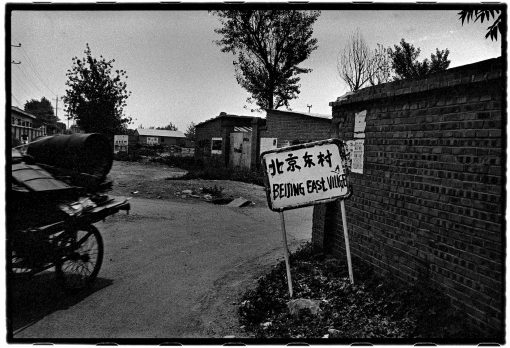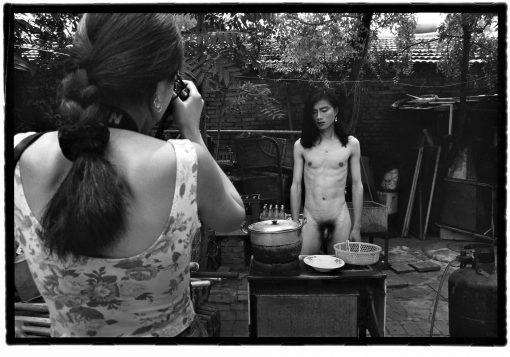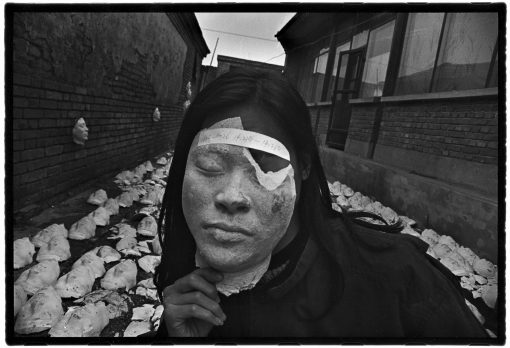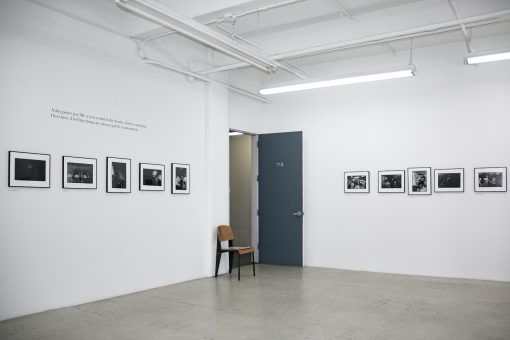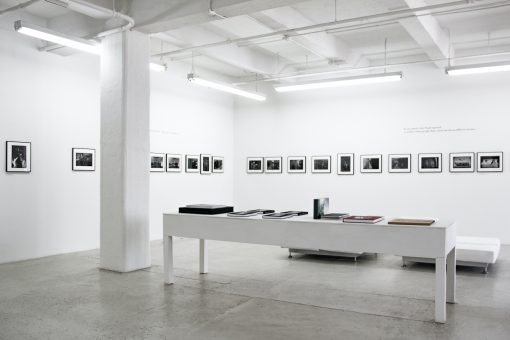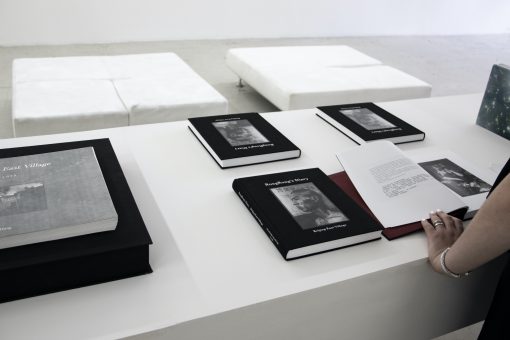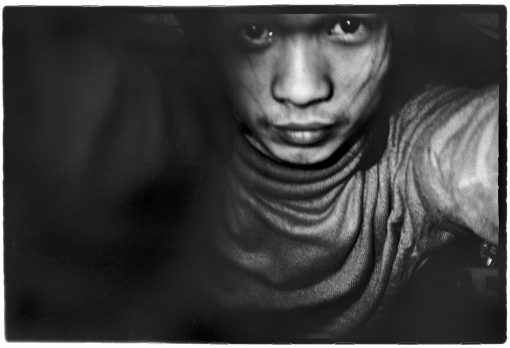Day After Day
RongRong and the Beijing East Village
6/13/2019 — 11/23/2019
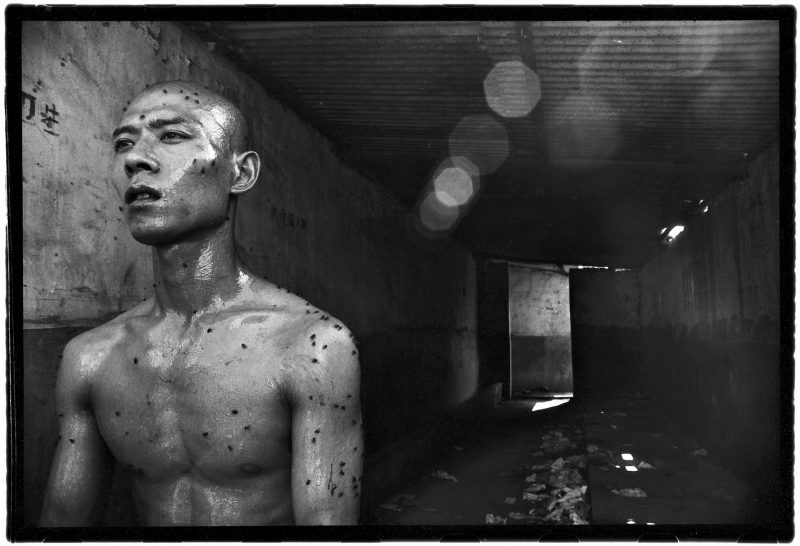
6/13/2019 — 11/23/2019
The Walther Collection, with Three Shadows Photography Art Centre in Beijing, is pleased to present Day After Day: RongRong and the Beijing East Village. The exhibition features forty of RongRong's seminal photographs from 1993–1998 portraying the Beijing East Village—an artistic community poignantly described by Silvia Fok as "a meteor in the history of contemporary Chinese art." Day After Day coincides with the planned summer publication of RongRong's Diary: Beijing East Village by The Walther Collection and Steidl.
Nearly four years after the Tiananmen student protests in 1989, RongRong, then a 25-year-old from the southern province of Fujian, joined a group of young and struggling bohemian artists who settled in a desolate village on the outskirts of Beijing. RongRong captured the quotidian yet eruptive life of this community, as many of his fellow artists pushed their bodies to the brink to create radical and subversive performances. Considered highly disruptive by political authorities, these artists lived under constant fear of harassment, raids, and arrests. Both as a principal photographer and essential collaborator, RongRong faithfully documented what remain some of the most powerful and important performance works of Chinese contemporary art, by artists such as Zhang Huan, Ma Liuming, and Ai Weiwei.
The exhibition Day After Day emphasizes these explosive performance art activities in the village, before and after it was forcefully evacuated in the summer of 1994. RongRong's emotive photographs will be paired with excerpts from a diary that RongRong kept during his stay in the village, as well as his present-day recollections. Such writings provide essential insight into the performances as they were being conceptualized and carried out, such as the extreme heat and squalid conditions of the public latrine that was the setting for Zhang Huan's 12 Square Meters; the ominous arrest of artists and viewers that followed Ma Liuming's groundbreaking nude performance Fen-Ma Liuming's Lunch; and the chilly evening when the collaborative Primordial Sounds took place beneath a Beijing overpass.
The Walther Collection worked closely with RongRong to produce the monograph RongRong's Diary: Beijing East Village, containing a near-comprehensive compilation of the artist's writings from this period. In short journal entries and personal correspondence with his sister, RongRong recounts his blossoming friendships with fellow artists, memorable outings and incidents, and their guerrilla approaches to staging new works. In doing so, he offers reflections both mundane and profound: adjusting to his new life in Beijing, deep anxiety about police backlash, and wavering faith in what photography can achieve in turbulent times. The book's interplay between RongRong's images and texts creates an absorbing personal narrative of an artist coming into his own.
"But here in the East Village, we do almost everything. Curse plays rock music and writes poetry. Kongbu curates and writes criticism. Zhang Huan, Ma Liuming, and Zhu Ming do performances … But I am the only photographer. Everyone left their hometown and seeks dreams here from afar. We are all children who left home, which makes us constantly hungry …"
– RongRong
RongRong was born in Fujian Province, China, in 1968. He was a key member of the Beijing East Village group, experimenting with photography and documenting the performances of his fellow artists in the early 1990s. These works have attained an almost mythic status in the history of contemporary Chinese experimental art. In 2007 RongRong and his wife and photographic partner inri founded Three Shadows Photography Art Centre in Beijing, emphasizing international collaborations and the creation of a sustainable infrastructure for young Chinese artists. RongRong's best-known works include the 1990s "East Village" and "Ruins" series, as well as his collaborations with inri since 2000 such as "In Fujisan," "Liulitun," and "Tsumari Story." Their joint work explores the beauty of the human body in nature and the urban environment, as well as the development of their family. His work has been exhibited worldwide during the past three decades and is held in the collections of the Museum of Modern Art, New York; the J. Paul Getty Museum, Los Angeles; the Myriam and Guy Ullens Foundation, Beijing; the Mori Art Museum, Tokyo, and several distinguished private foundations.
"The 40 photographs in this exhibition capture RongRong's contribution to the Beijing East Village art scene, demonstrating that he was as much a participant as an observer. Each photograph is paired with captions from the photographer's diary, which has been published by The Walther Collection as a beautiful book that will surely be essential reading for anyone seeking to learn more about this period in Chinese art."
– Barbara Pollack
Photograph Magazine September/October 2019 Issue
"The radical, seminal, and short-lived Beijing East Village was founded in 1992, in the wake of the Tiananmen Square massacre . . . This intimate show revisits the scene in candid black-and-white images, shot with a 35-mm camera that [RongRong] bought with money he earned by working in his father's store in Fujian Province. At the time, photography didn't exist as an art form in China; RongRong's indelible pictures of his peers' courageous, outlandish performances helped to change that."
-Andrea Scott, September 2, 2019 Print Issue
"New York Galleries: What To See Right Now"
"A 25-year-old photographer named RongRong was among them, and 40-odd black-and-white prints here document the low-rent fecundity of Beijing’s East Village, named in tribute to New York’s own beggared art quarter. ... If you know your Chinese art history, RongRong’s photographs capture myths as foundational as Pollock dripping paint in front of Hans Namuth’s lens."
-Jason Farago
"But it was RongRong who insured its place in art history, documenting the courageous, outlandish performance artists, notably the celebrated Zhang Huan, whose renegade actions drew the attention of the global art world...."
-Andrea Scott, "Inside a Vanished Hub of Beijing's Experimental Art Scene"
"The book is a gripping and generous first-person account of a community, and a short-lived era, that has proven to be enormously significant for contemporary Chinese art. RongRong participated in the ongoing fight for unbridled expression within a repressive social structure, and the vital role that performance played in this struggle."
-Richard B. Woodward
